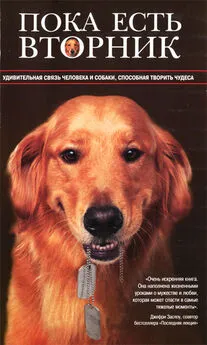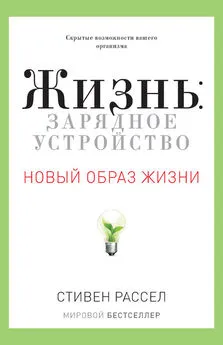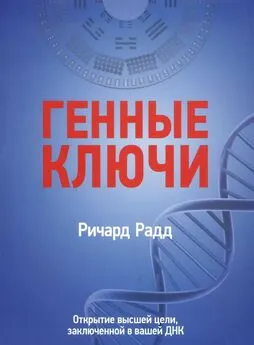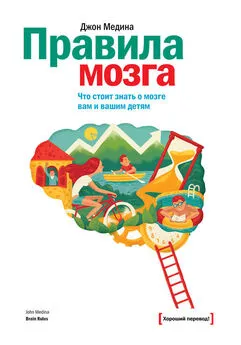Стивен Хэйне - ДНК – не приговор. Удивительная связь между вами и вашими генами
- Название:ДНК – не приговор. Удивительная связь между вами и вашими генами
- Автор:
- Жанр:
- Издательство:Литагент МИФ без БК
- Год:2019
- Город:Москва
- ISBN:978-5-00146-004-6
- Рейтинг:
- Избранное:Добавить в избранное
-
Отзывы:
-
Ваша оценка:
Стивен Хэйне - ДНК – не приговор. Удивительная связь между вами и вашими генами краткое содержание
ДНК – не приговор. Удивительная связь между вами и вашими генами - читать онлайн бесплатно ознакомительный отрывок
Интервал:
Закладка:
536
Английское название (CRISPR associated protein # 9) дает аббревиатуру Cas9 . Прим. перев.
537
Barrangou, R., Fremaux, C., Deveau, H., Richards, M., Boyaval, P., Moineau, S., et al. (2007). CRISPR provides acquired resistance against viruses in prokaryotes. Science , 315, 1709–1712; Hsu, P. D., Lander, E. S., & Zhang, F. (2014). Development and applications of CRISPR-Cas9 for genome engineering. Cell , 157, 1262–1278; Jinek, M., Chylinski, K., Fonfara, I., Hauer, M., Doudna, J. A., & Charpentier, E. (2012). A programmable dual-RNA-guided DNA endonuclease in adaptive bacterial immunity. Science , 337, 816–821. Обзоры CRISPR , написанные простым языком, см.: Pollack, A. (11.05.2015). Jennifer Doudna, a pioneer who helped simplify genome editing. New York Times ( http://www.nytimes.com/2015/05/12/science/jennifer-doudna-crispr-cas9-genetic-engineering.html?smid=pl-share); Kahn, J. (09.11.2015). The Crispr quandary. New York Times ( http://www.nytimes.com/2015/11/15/magazine/the-crispr-quandary.html?action=click&pgtype=Homepage®ion=CColumn&module=MostEmailed&version=Full&src=me&WT.nav=MostEmailed).
538
Baltimore, D., Berg, P., Botchan, M., Carroll, D., Charo, R. A., Church, G., et al. (2015). A prudent path forward for genomic engineering and germline gene modification. Science , 348, 36–38.
539
Liang, P., Xu, Y., Zhang, X., Ding, C., Huang, R., Zhang, Z., et al. (2015). CRISPR/Cas9-mediated gene editing in human tripronuclear zygotes. Protein & Cell , 6 (5), 363–372.
540
Cyranoski, D., & Reardon, S. (22.04.2015). Chinese scientists genetically modify human embryos. Nature News ( http://www.nature.com/news/chinese-scientists-genetically-modify-human-embryos-1.17378).
541
Cressey, D., Abbott, A., & Ledford, H. (18.09.2015). UK scientists apply for licence to edit genes in human embryos. Nature News ( http://www.nature.com/news/uk-scientists-apply-for-licence-to-edit-genes-in-human-embryos-1.18394).
542
Yang, L., Güell, M., Niu, D., George, H., Lesha, E., Grishin, D., et al. (2015). Genome-wide inactivation of porcine endogenous retroviruses (PERVs). Science , 350, 1101–1104.
543
Конференция была проведена в декабре 2015 года с целью разработки этических принципов исследований с использованием CRISPR ( https://innovativegenomics.org/international-summit-on-human-gene-editing/).
544
Цитата из пятой серии документального сериала DNA: Pandora ’ s Box , PBS ( https://www.youtube.com/watch?v=qe4EW3AOgzs).
545
Metzl, J. F. (10.10.2014). The genetics epidemic: The revolution in DNA science and what to do about it. Foreign Affairs ( https://www.foreignaffairs.com/articles/united-states/2014-10-10/genetics-epidemic). Miller, G. (2013). Chinese eugenics. The Edge ( http://edge.org/response-detail/23838).
546
Winkelman, W. D., Missmer, S. A., Myers, D., & Ginsburg, E. S. (2015). Public perspectives on the use of preimplantation genetic diagnosis. Journal of Assisted Reproductive Genetics , 32, 665–675. Hudson, K., & Scott, J. (2002). Public awareness and attitudes about genetic technology . Washington, DC: Genetics and Public Policy Center.
547
Duster, T. (2003). Backdoor to eugenics . New York, NY: Routledge.
548
Schwartz, B., Ward, A., Monterosso, J., Lyubomirsky, S., White, K., & Lehman, D. R. (2002). Maximizing versus satisficing: Happiness is a matter of choice. Journal of Personality and Social Psychology , 83, 1178–1197.
549
Schwartz, B., Ward, A., Monterosso, J., Lyubomirsky, S., White, K., & Lehman, D. R. (2002). Maximizing versus satisficing: Happiness is a matter of choice. Journal of Personality and Social Psychology , 83, 1178–1197.
550
Power, R. A., Steinberg, S., Bjornsdottir, G., Rietveld, C. A., Abdellaoui, A., Nivard, M. M., et al. (2015). Polygenic risk scores for schizophrenia and bipolar disorder predict creativity. Nature Neuroscience , 18, 953–955; Andreasen, N. C. (1987). Creativity and mental illness: Prevalence rates in writers and their first-degree relatives. American Journal of Psychiatry , 144, 1288–1292.
551
Brenner, S. (30.10.2009). The personalized genome: Do I want to know? Gairdner Foundation 50 thAnniversary, Toronto, ON ( http://mediacast.ic.utoronto.ca/20091030-GFS-P4/index.htm).
552
Данные взяты из издания: Forer, B. R. (1949). The fallacy of personal validation: A classroom demonstration of gullibility. Journal of Abnormal and Social Psychology , 44, 118–123.
553
Smoller, J. W., Paulus, M. P., Fagerness, J. A., Purcell, S., Yamaki, L. H., Hirshfeld-Becker, D., et al. (2008). Influence of RGS2 on anxiety-related temperament, personality, and brain function. Archives of General Psychiatry , 65, 298–308.
554
https://www.23andme.com/you/community/thread/6235/.
555
Pinker, S. (7.01.2009). My genome, my self. New York Times ( http://www.nytimes.com/2009/01/11/magazine/11Genome-t.html?_r=0).
556
См.: Collins, F. S. (2010). The language of life . New York, NY: Harper Perennial. P. 23.
557
Pinker, S. (07.01.2009). My genome, my self. New York Times ( http://www.nytimes.com/2009/01/11/magazine/11Genome-t.html?_r=0).
558
http://www.improbable.com/hair/gallery2/.
559
Austin, J. C. (2010). Re-conceptualizing risk in genetic counseling: Implications for clinical practice. Journal of Genetic Counseling , 19, 228–234.
560
Evans, D. G. R., Blair, V., Greenhalgh, R., Hopwood, P., & Howell, A. (1994). The impact of genetic counseling on risk perception in women with a family history of breast cancer. British Journal of Cancer , 70, 934–938. Smerecnik, C. M. R., Mesters, I., Verweij, E., de Vries, N. K., & de Vries, H. (2009). A systematic review of the impact of genetic counseling on risk perception accuracy. Journal of Genetic Counseling , 18, 217–228.
561
Цит. по: Sheldon Reed reported in Stern, A. M. (2012). Telling genes (p. 47). Baltimore, MD: Johns Hopkins University Press.
562
Rothman, B. K. (1986). The tentative pregnancy (p. 43). New York, NY: Viking.
563
Слова Дианы Пуналес-Морехон, цит. по: Stern, A. M. (2012). Telling genes (p. 40). Baltimore, MD: Johns Hopkins University Press.
564
Cheung, B. Y. (2016). Out of my control: The effects of perceived genetic etiology . Unpublished doctoral dissertation: University of British Columbia.
565
Faraone, S. V., Smoller, J. W., Pato, C. N., Sullivan, P., & Tsuang, M. T. (2008). Editorial: The new neuropsychiatric genetics. American Journal of Medical Genetics Part B (Neuropsychiatric Genetics) , 147B, 1–2.
566
Benjamin, D. J., Cesarini, D., van der Loos, M. J. H. M., Dawes, C. T., Koellinger, P. D., Magnusson, P. K. E., et al. (2012). The genetic architecture of economic and political preferences. Proceedings of the National Academy of Science , 109, 8026–8031.
567
Критику ценности исследований GWAS см.: Goldstein, D. B. (2009). Common genetic variation and human traits. New England Journal of Medicine , 360, 1696–1698.
568
Dobbs, D. (21.05.2015). What is your DNA worth? BuzzFeed ( http://www.buzzfeed.com/daviddobbs/weighing-the-promises-of-big-genomics#.vjnnjJzwK).
569
Wang, K., Zhang, H., Ma, D., Bucan, M., Glessner, J. T., Abrahams, B. S., et al. (2009). Common genetic variants on 5p14.1 associate with autism spectrum disorders. Nature , 459, 528–533.
570
Bloomberg News (29.04.2009). Researchers identify autism genes that give clues to brain structure. New York Daily News ( http://www.nydailynews.com/life-style/health/researchers-identify-autism-genes-give-clues-brain-structure-article-1.360034).
571
Weiss, L. A. (2009). A genome-wide linkage and association scan reveals novel loci for autism. Nature , 461, 802–808.
572
Список эффектов, с которыми был связан этот ген, см.: Charney, E., & English, W. (2012). Candidate genes and political behavior. American Political Science Review , 106, 1–34.
573
Величина воздействия гена на тягу к новизне равна d = 0,06, что соответствует R 2чуть меньше 0,001 (см.: Kluger, A. N., Siegfried, Z., & Ebstein, R. P. (2002). A meta-analysis of the association between DRD4 polymorphism and novelty seeking. Molecular Psychiatry , 7, 712–717).
574
Эта цифра завышена потому, что существует не только два варианта числа повторов этой изменчивой области гена, от которой зависит величина его воздействия на передачу дофамина. Есть как минимум 10 вариантов количества повторов – от 2 до 11 (последнее встречается гораздо реже). Проблема в том, что в различных исследованиях разные варианты этих аллелей обозначаются как сильные или слабые в отношении влияния на передачу дофамина, что затрудняет их сравнение. Некоторые ученые только полиморфизм с 7 повторениями называют «сильным» и противопоставляют его всем остальным (например, Ebstein, R. P., et al. [1996]). Другие так же выделяют 6, 7 и 8 повторов (скажем, Swift et al. [2000]). В ряде исследований 2, 3, 4 и 5 противопоставляются 6, 7 и 8 (например, Vadenberg et al. [1997]). Еще ученые противопоставляют: 5 и 6–2, 3 и 4 (Ono et al. [1997]); 2, 3, 4, 5 и 6–7 и больше (Garcia, J. R., et al. [2010]); 2, 3 и 4–5, 6 и 7 (Tomitaka et al. [1999]); 2, 3 и 4–5, 6, 7, 8, 9, 10 и 11 (Chen et al., 1999); 7 и 2 – всем остальным (Reist et al. [2007]) и, наконец, 7 и 2–4 (Kitayama et al. [2014]). См.: Chen, C., Burton, M., Greenberger, E., & Dmitrieva, J. (1999). Population migration and the variation of dopamine D4 receptor (DRD4) allele frequencies around the globe. Evolution and Human Behavior , 20, 309–324; Ebstein, R. P., et al. (1996). Dopamine D4 receptor (DRD4) exon III polymorphism associated with the human personality trait of novelty seeking. Nature Genetics , 12, 78–80; Garcia, J. R., MacKillop, J., Aller, E. L., Merriwether, A. M., Wilson, D. S., & Lum, J. K. (2010). Associations between dopamine D4 receptor gene variation with both infidelity and sexual promiscuity. PLoS ONE 5 (11): e14162; Kitayama, S., King, A., Yoon, C., Tompson, S., Huff, S., & Liberzon, I. (2014). The dopamine D4 receptor gene (DRD4) moderates cultural difference in independent versus interdependent social orientation. Psychological Science , 25, 1169–1177; Ono, Y., Manki, H., Yoshimura, K., Muramatsu, T., Mizushima, H., Higuchi, S., et al. (1997). Association between dopamine D4 receptor (D4DR) exon III polymorphism and novelty seeking in Japanese subjects. American Journal of Medical Genetics , 74, 501–503; Reist, C., Ozdemir, V., Wang, E., Hashemzadeh, M., Mee, S., & Moyzis, R. (2007). Novelty seeking and the dopamine D4 receptor gene (DRD4) revisited in Asians. American Journal of Medical Genetics Part B , 144B, 453–457; Swift, G., Larsen, B., Hawi, Z., & Gill, J. (2000). Novelty seeking traits and D4 dopamine receptors . American Journal of Medical Genetics , 96, 222–223; Tomitaka, M., Tomitaka, S., Otuka, Y., Kim, K., Matuki, H., Sakamoto, K., et al. (1999). Association between novelty seeking and dopamine receptor D4 (DRD4) exon III polymorphism in Japanese subjects. American Journal of Medical Genetics , 88, 469–471; Vandenbergh, D. J., Zonderman, A. B., Wang, J., Uhl, G. R., & Costa, P. T. Jr. (1997). No association between novelty seeking and dopamine D4 receptor (D4DR) exon III seven repeat alleles in Baltimore Longitudinal Study of Aging participants. Molecular Psychiatry , 2, 417–419.
Читать дальшеИнтервал:
Закладка:










